November 19, 2025
.jpg)
14 Oct 25
Adobe study points out that across all countries, 75% of marketing and CX leaders still heavily rely on third-party cookies. The reliance is even higher, i.e., 82% in countries like India and New Zealand.
It is clear from the above statistics that third-party cookies are still critical in digital marketing. Marketers rely on them for targeting, retargeting, and personalization. However, the recent headlines of adventing Google's Cookiepocalypse have raised suspicions over their use and efficiency.
Recently, first-party data marketing has started gaining the attention of marketers. Why? Browsers like Safari, Firefox, and Brave have been phasing out third-party cookies. Currently, Chrome allows the use of third-party cookies, and users can control cookie preferences.
However, Google continues to develop other privacy-first marketing options like Google Privacy Sandbox. Users want more privacy over the internet, and third-party data poses several privacy issues. Privacy regulations like GDPR and CCPA are also tightening the use of third-party cookies and data. Hence, first-party data is the new marketing gold.
By the end of this article, you’ll know why building your own “data bank” is important.
The concept of first-party data marketing is not new, but its value and relevance have increased due to looming cookieless advertising. SalesForce's State of Marketing Report highlights that 84% marketers use customer insight, first-party, and transactional data as the top three data sources.
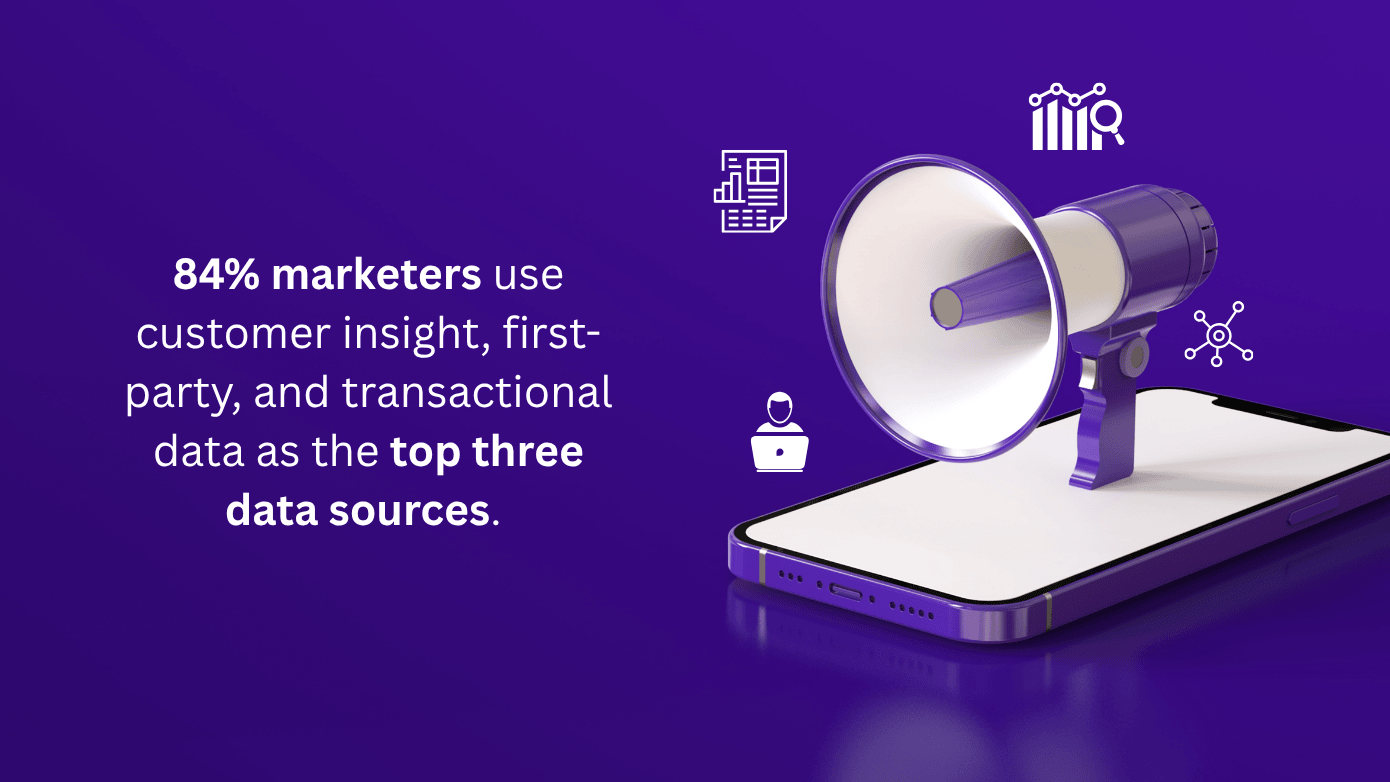
First-party data is directly collected from your users. It is generally collected through purchases, website visits, loyalty programs, and email interactions. This is why it is more accurate than third-party lists or tracking pixels.
First-party data marketing provides trustworthy insights to marketers. They can confidently use these insights to understand real preferences and behaviors. It results in better targeting, stronger personalization, and campaigns that genuinely resonate with customers. There is no home for guesswork when using a first-party data strategy.
Many new regulations are coming up due to the increasing demand for user privacy. Regulations such as GDPR and CCPA have further raised the stakes on how customer data is collected and used.
Agencies that use first-party data are on the right track as regulations approve of first-party data sources. The data is collected with customer consent and hence builds transparency. This transparency fosters trust, reduces the risk of fines, and demonstrates respect for consumer privacy.
Violating GDPR can cost up to 4% of annual global revenue, while the CCPA can fine businesses up to $7,500 per intentional violation. Brands that adopt a consent-first approach safeguard themselves legally and also strengthen their reputation as responsible, customer-centric businesses.
Chrome may fully phase out third-party cookies in the future. Marketers who depend on these external signals will surely struggle. They will find difficulties in targeting and retargeting. First-party data provides continuity by giving brands their own reliable source of audience insights.
Instead of worrying about when third-party options may disappear, agencies will have to lay down strong first-party data foundations. The 2024 Acquia CX Trends Report points out that 93% of marketers believe gathering first-party data is more important to their organization than it was two years ago.
Purchasing data from data brokers or relying heavily on ad platforms comes with high costs. Moreover, you can never be sure about the accuracy of the purchased data. On the other hand, first-party data is your own asset.
The more you collect and refine, the more value it generates over time. Brands can cut costs and increase ROI from marketing campaigns by reducing reliance on expensive intermediaries.
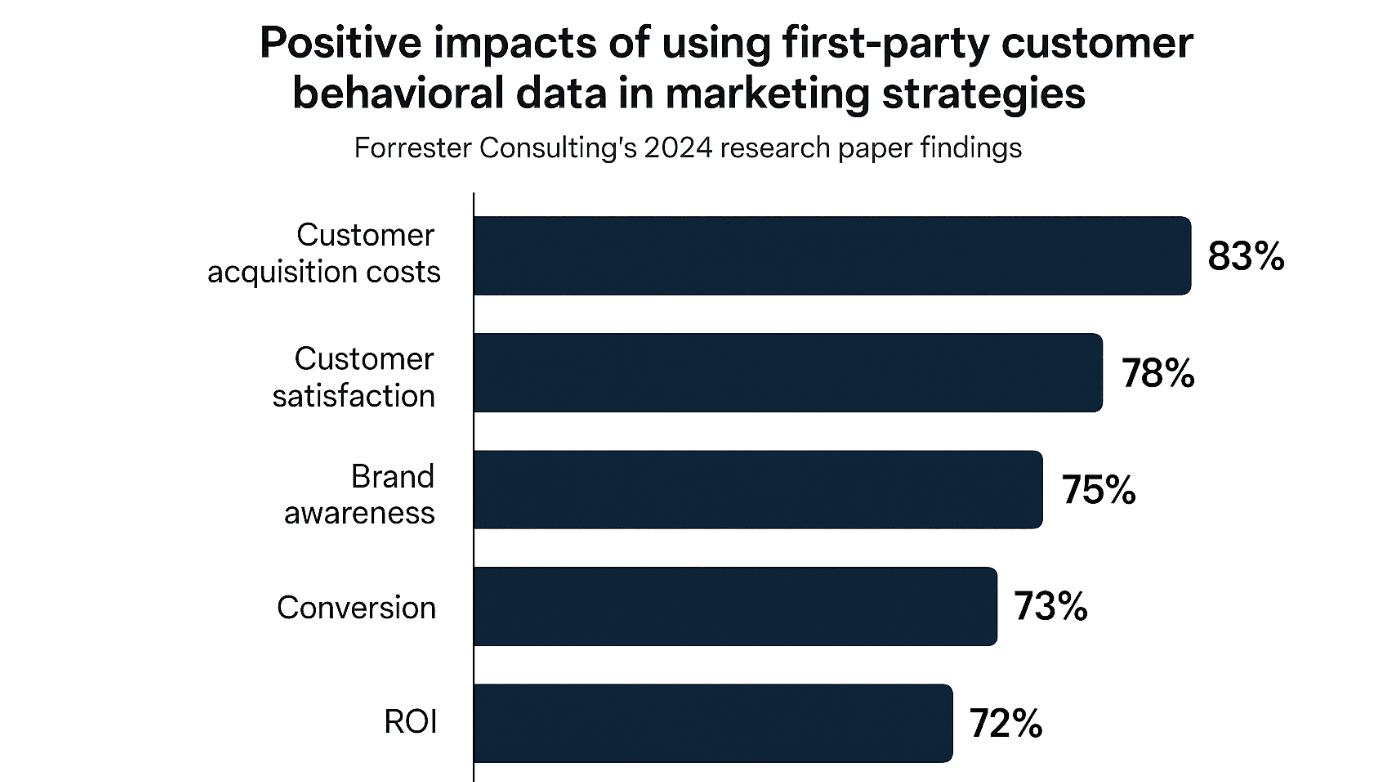
Forrester Consulting's 2024 research paper findings show that using first-party customer behavioral data in marketing strategies positively impacts:
Yet despite so many major benefits, as mentioned above, many marketers find themselves struggling with first-party data. There are several barriers that stand in the way:
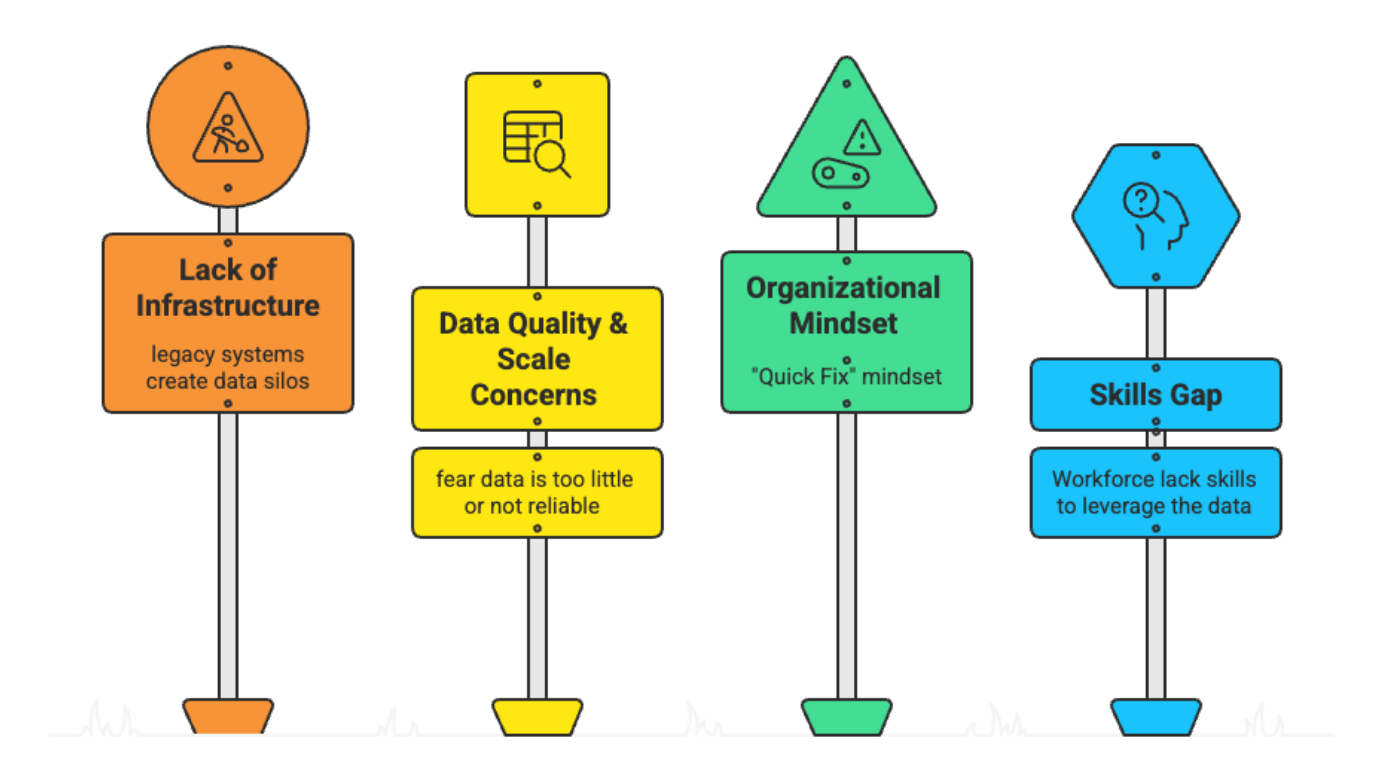
"The Fast Track to Digital Marketing Maturity" report by BCG points out that nine out of ten marketers recognize first-party data as important, but fewer than a third are able to integrate it across channels, and very few are good at using data to create better outcomes for customers.
The barriers have multiple dimensions, from technical to cultural and organizational. However, despite the barriers, many brands and agencies have successfully used first-party data to their advantage. They have used it to gain a competitive advantage and worked wonders in marketing.
Let's look at some of the brands that have proved how first-party data can be a powerful asset.
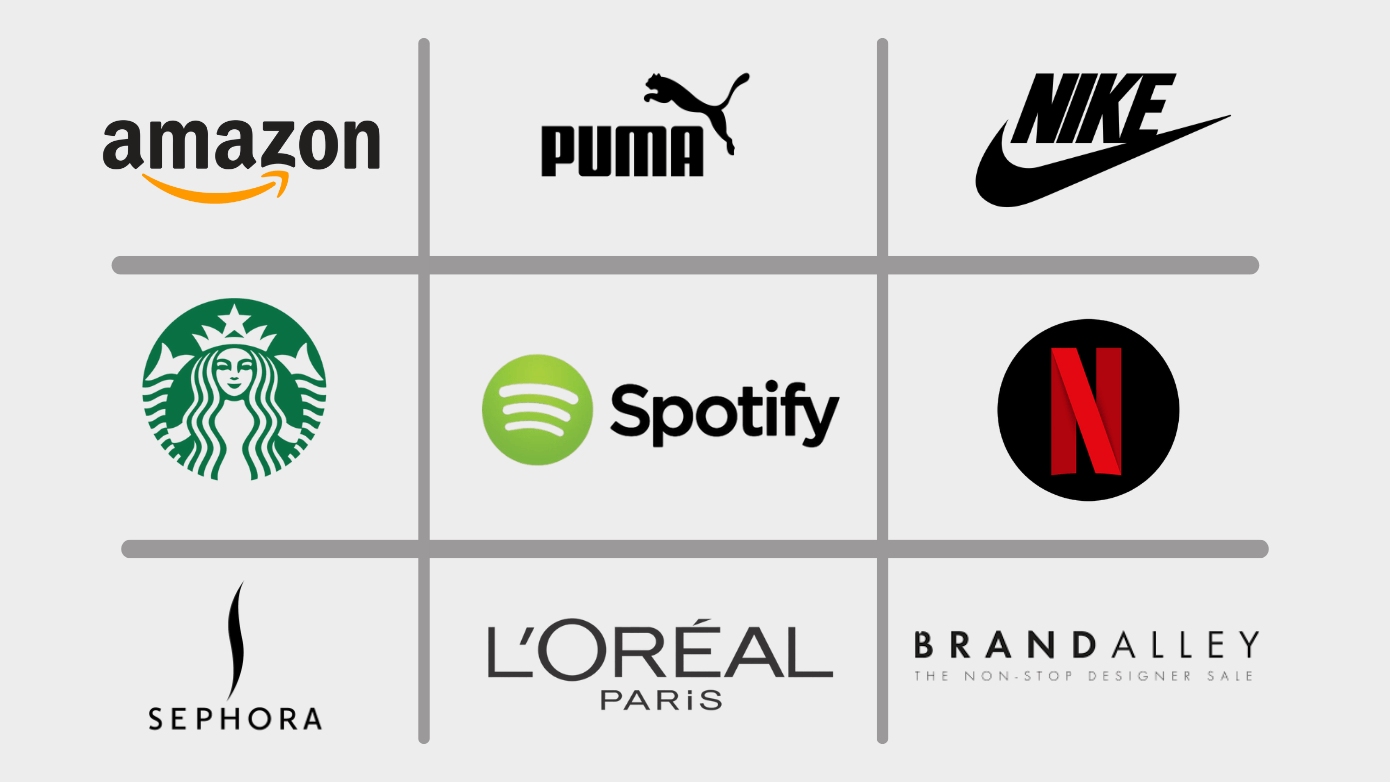
One of the popular examples is Puma, the largest global sportswear brand, which wanted to deliver personalized experiences on all consumer touchpoints. But they found it challenging to unify data and scale personalization efforts.
They used a first-party data strategy along with sophisticated AI and automation tools to create personalized journeys based on customer behavior and preferences. They even personalised product recommendations and offer targeting.
They used local site behaviour, store-purchase receipts, language settings, and loyalty-tier status to flow into a single profile. They made sure every campaign reflected currency, size, and style preferences.
The Result was:
Some other brands that use first-party data marketing to their benefit are: Sephora (Beauty Insider Loyalty Program), Starbucks, Nike, Amazon, Netflix, Spotify, L'Oréal, Pepsico (Quaker Oats), BrandAlley, and many others.
It is clear that if agencies are able to find a way to use a first-party data strategy to their benefit, then they will reap long-term benefits. In fact, according to Invoca, 82% of marketers plan to increase their use of first-party data, and 81% are concerned that using third-party data will cause privacy issues.
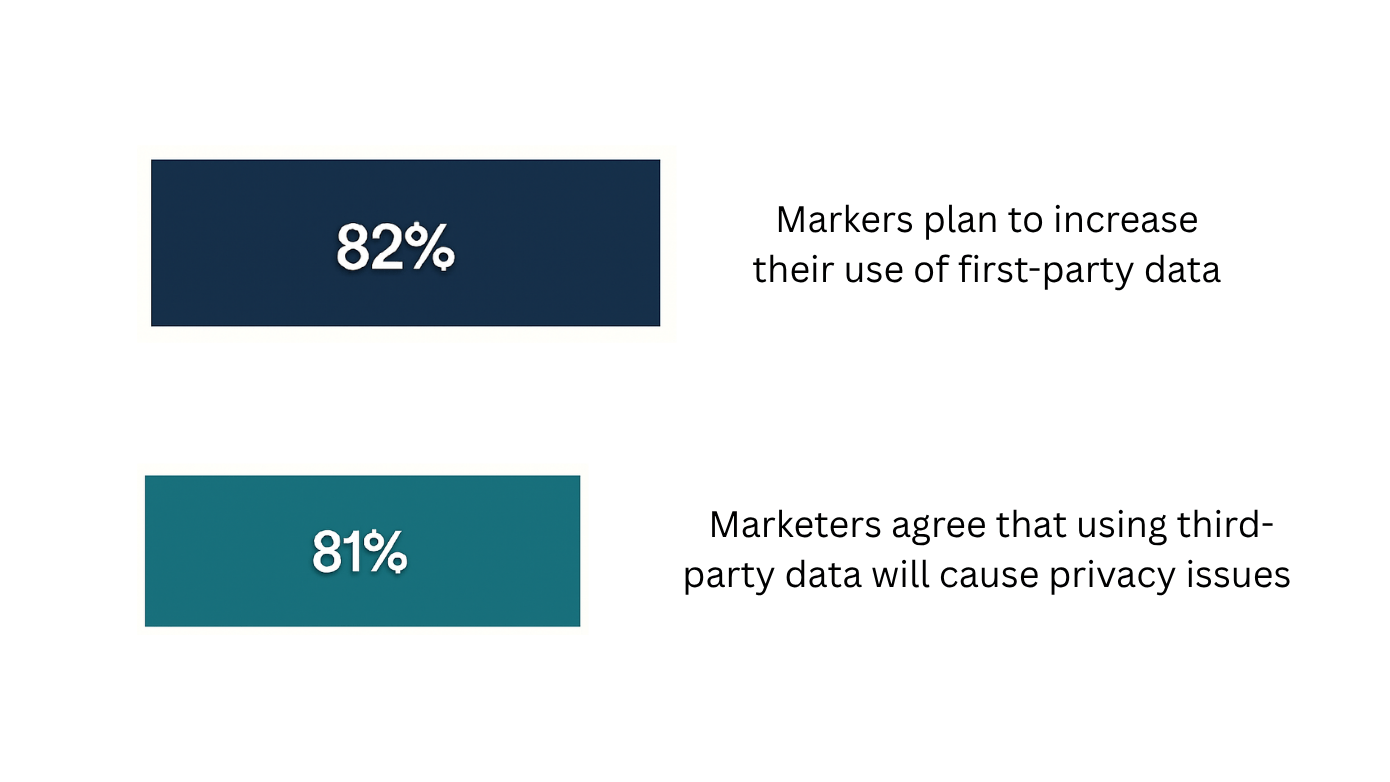
Now comes the big question: how to mine first-party data, the new marketing gold? Unlike third-party lists, marketers will need the right strategies and tools to capture, unify, and activate this data. Some of the proven methods are:
Don't mistake a CRM system for just a storage tool. As per data, 91% of companies now use CRM software, and 74% of businesses agree that using a CRM provides them better access to marketing, sales, and service data.
CRM systems can become the hub of your first-party data universe. It stores contacts as well as unifies every interaction. It can integrate sales calls, email clicks, and purchase history into a single customer view (SCV).
CRM systems, when integrated with ad platforms, analytics, and support tickets, create a closed loop with valuable insights. Furthermore, pairing CRM with Customer Data Platforms (CDPs) takes things to a whole new level. It unlocks predictive segmentation, churn analysis, and lifetime value forecasting.
It is important to give contextual data to CRM as it helps brands run smarter campaigns based on customer reality. If your goal is not just centralization but also activation, then the CRM system can not be overlooked.
Modern buyers are smart. They don’t simply buy anything just by looking at its advertisement. They bounce between many channels and platforms before buying any product or service. For instance, they browse on mobile, research on desktop, purchase in-store, and engage via email or social media.
To collect first-party data, brands must sync all touchpoints, like:
Capturing omnichannel data ensures that every customer interaction feeds into a unified profile. This means if a customer adds your product to their cart on mobile but then abandons it, you can retarget the same customer with an email offer or a push-up notification, while their in-store purchases still inform personalization online.
As per ResearchLive, 87% of retail leaders agree that an omnichannel strategy is essential to their business success. Nine out of 10 retailers say that they have an omnichannel strategy or plan to invest in one soon.
It is unsustainable to collect first-party data manually. Agencies will have to use automation for real-time ingestion, processing, and activation of data across systems. For example, make use of:
The real advantage lies in speed. Automating workflow allows marketers to work faster and focus on personalizing campaigns at scale. It also reduces operational overheads and allows boosting campaign ROI. Over 70% of companies and marketers use marketing automation, and many more are planning to adopt it.
Besides all three points highlighted above, companies will also have to pay adequate attention to building strong data governance & consent management frameworks. Make sure the data is validated and clean to reduce wasted ad-spends. At the end, how you can mine first-party data relies on creating a data-first culture, not gut feelings.
A winning first-party data strategy doesn’t stop at collection. You also need to know how to use first-party data effectively. Here are some helpful points for you:
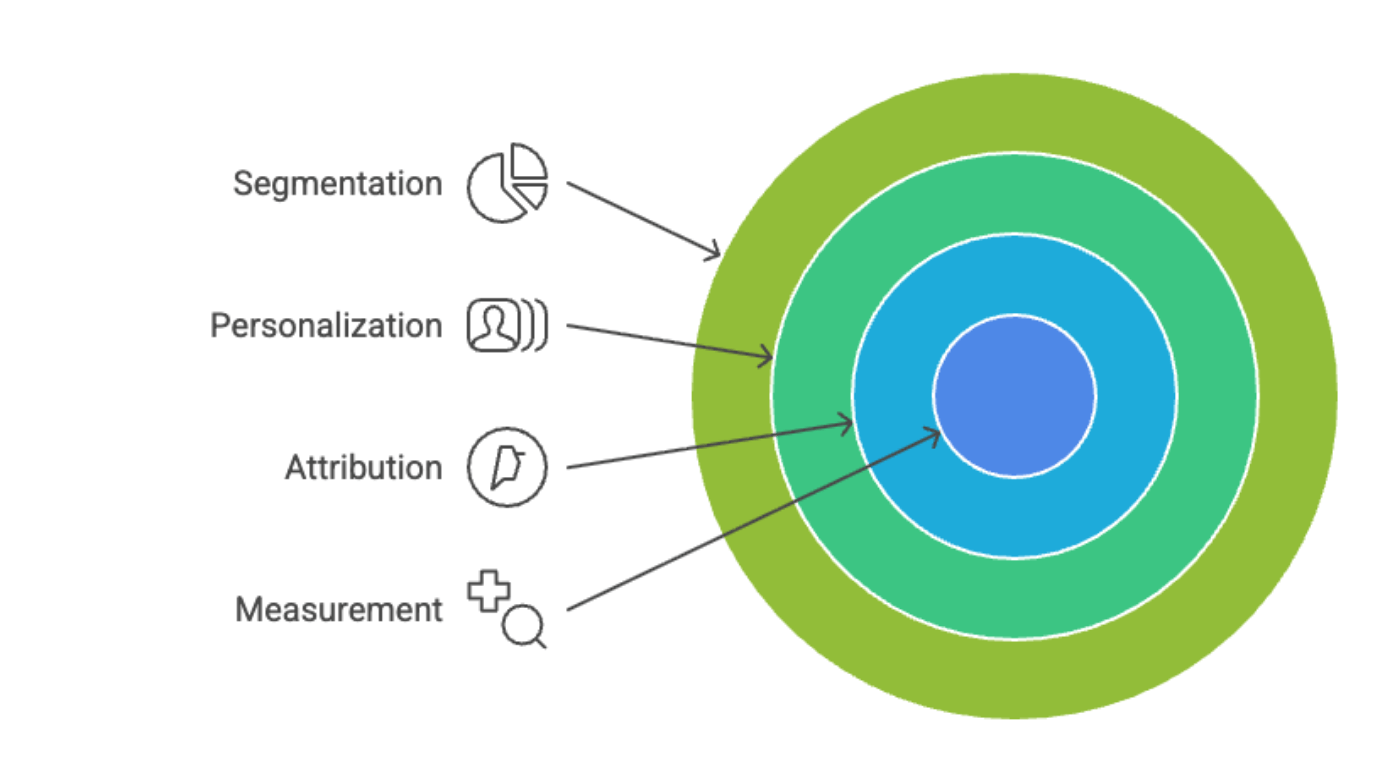
By now, you clearly understand the importance of first-party data. You also understand that the real challenge for marketers lies in its execution. It isn't easy to consistently collect first-party data, unify it across fragmented systems, and then activate it at scale. This is exactly where CM Galaxy can be your trusted partner.
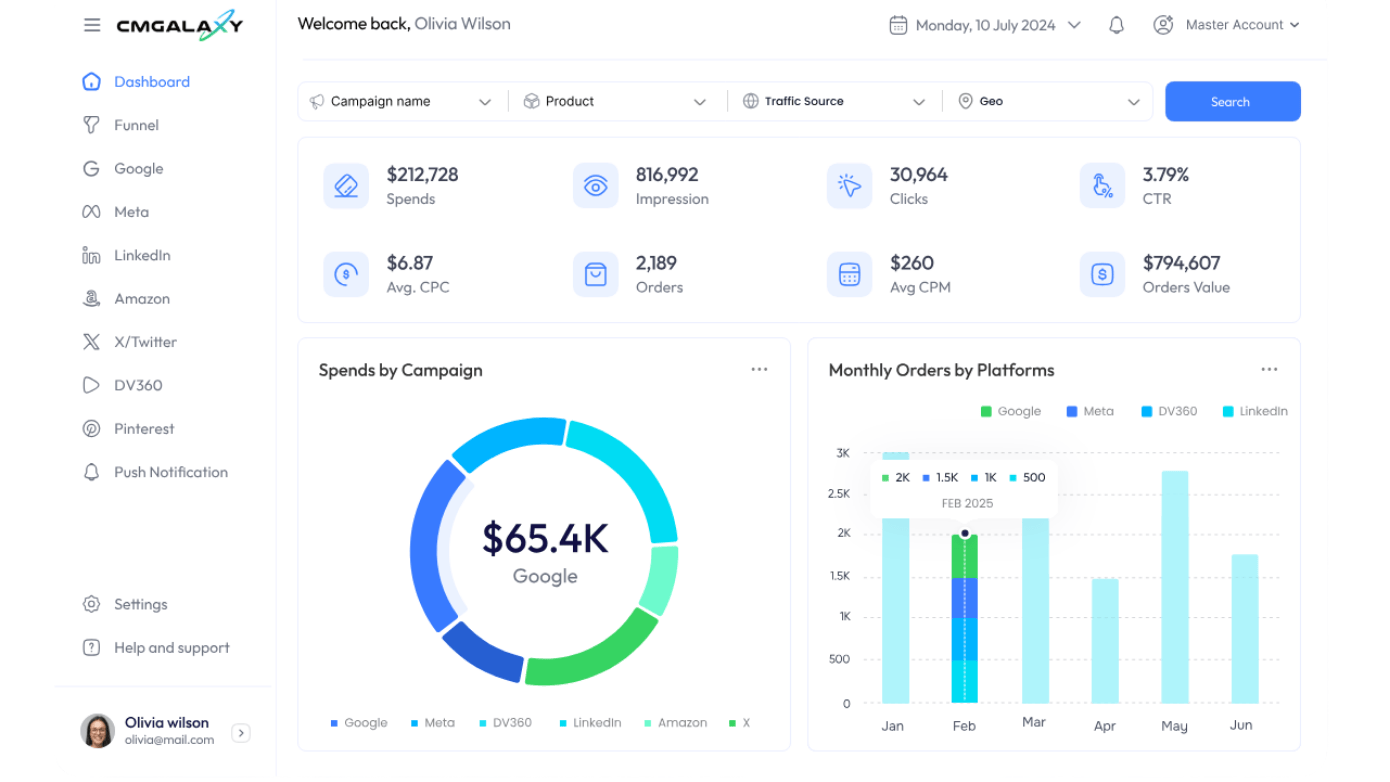
CM Galaxy is specially built for modern marketers, SMEs/SMBs, and tech-savvy teams. It helps you collect first-party data across more than 10 channels and transform it into an SCV. Then it puts it to work through campaigns that drive measurable growth. Here's how CM Galaxy boosts your ROI:
There are high chances that we are moving towards cookieless marketing. If not entirely, then surely, sooner or later, third-party data collected through cookies will become a more and more restricted domain. Agencies and companies have to work on creating their own data bank while following all data governance practices and regulations.
CM Galaxy lets you not only collect and store first-party data but also activate to increase your ROI. Unified omnichannel campaigns, along with full-funnel attribution, will help you stay competitive and gain an edge in changing marketing and advertising scenarios.
First-party data marketing is the way forward for sustainable digital strategies. Customers want privacy and are vigilant. They want to be informed about when and where their data is being used and by whom. Collecting first-party data directly from users is the way brands gain accuracy and trust. It also helps with abiding by regulations and laws that third-party data can't provide.
A strong first-party data strategy will help modern marketers overcome increasing user and data privacy violation concerns. It will help prepare for a potential cookieless advertising era. Those who know how to use first-party data for segmentation, personalization, and attribution will have better ROI and customer experiences. They will be in the game till the end.
The debate over first-party vs third-party is coming to an end, with first-party data marketing winning user trust. That's why agencies and businesses need to start building their own "data bank" now. Tools like CM Galaxy are there to help you make a strong first-party data strategy.